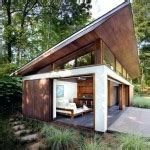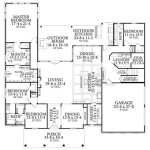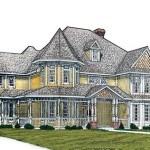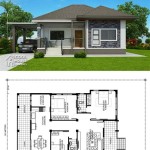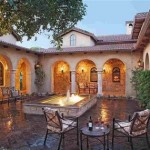Shed house plans are detailed blueprints that provide instructions for constructing a small, detached building commonly referred to as a shed or an outbuilding. These plans typically include measurements, materials list, and step-by-step construction guidelines.
Shed house plans serve numerous purposes, including providing additional storage space for tools, equipment, and materials, creating a designated workspace for hobbies or home projects, or even accommodating guests as a cozy and functional backyard retreat.
Before embarking on a shed house project, it is crucial to consult local building codes and regulations to ensure compliance and obtain necessary permits. With careful planning and execution, shed house plans can offer a valuable and versatile solution for expanding your living space or enhancing your property’s functionality.
Here are nine important points to consider when working with shed house plans:
- Define purpose: Determine the intended use of the shed.
- Check regulations: Review local building codes and permit requirements.
- Choose materials: Select durable and weather-resistant materials.
- Plan foundation: Determine the appropriate foundation type for the soil conditions.
- Design layout: Optimize space utilization and functionality.
- Install windows/doors: Provide natural light and ventilation.
- Consider insulation: Regulate temperature and energy efficiency.
- Plan electrical/plumbing: Include necessary wiring and plumbing fixtures.
- Follow instructions carefully: Adhere to the shed house plans for a successful build.
By considering these points, you can ensure that your shed house project meets your specific needs and complies with local regulations.
Define purpose: Determine the intended use of the shed.
The first step in creating a shed house plan is to clearly define its intended purpose. This will guide your decisions regarding the shed’s size, design, and features. Consider the following questions:
- Storage: Will the shed primarily be used to store tools, equipment, or other items?
- Workspace: Do you need a dedicated space for hobbies, projects, or a home office?
- Guest accommodation: Could the shed serve as a cozy retreat for guests or extended family?
- Multi-purpose: Will the shed fulfill multiple functions, such as storage and workspace?
Once you have determined the primary purpose of the shed, you can begin to develop a plan that meets your specific needs. For example, if the shed will primarily be used for storage, you may prioritize durability and weather resistance. If the shed will be used as a workspace, you may need to consider insulation, electrical wiring, and ventilation.
Defining the purpose of the shed will also help you determine its size. A shed used for storing lawn equipment and tools may only need to be 8×10 feet, while a shed intended for use as a guest house may require dimensions of 12×16 feet or larger. The intended use will also influence the design of the shed, including the number and placement of windows and doors.
By carefully considering the intended use of the shed, you can create a plan that optimizes its functionality and meets your specific requirements.
Check regulations: Review local building codes and permit requirements.
Before beginning construction on your shed house, it is crucial to review local building codes and permit requirements. These regulations vary from municipality to municipality and ensure that your project complies with safety and construction standards. Failure to obtain the necessary permits can result in fines, stop-work orders, or even the demolition of your shed.
To determine the specific requirements for your shed house, contact your local building department. They will be able to provide you with information on:
- Setbacks: Minimum distances that must be maintained from property lines, roads, and other structures.
- Height restrictions: Maximum allowable height for sheds and other outbuildings.
- Foundation requirements: Specifications for the type and depth of foundation required for your shed.
- Electrical and plumbing codes: Regulations governing the installation of electrical wiring and plumbing fixtures.
- Permit fees: Costs associated with obtaining a building permit.
Once you have gathered this information, you can begin the process of applying for a building permit. This typically involves submitting a completed application form, along with your shed house plans and any required fees. The building department will review your application and plans to ensure that they comply with local codes. If everything is in order, you will be issued a building permit.
Obtaining a building permit is an important step in the shed house construction process. It ensures that your project meets safety and construction standards, and protects you from potential legal issues. By taking the time to review local regulations and obtain the necessary permits, you can avoid costly delays and ensure a successful build.
In addition to local building codes, there may also be homeowners association (HOA) regulations that you need to consider. HOAs are private organizations that set rules and regulations for properties within their jurisdiction. These regulations may include restrictions on the size, design, and placement of sheds and other outbuildings. It is important to check with your HOA before beginning construction to ensure that your shed house plans comply with their regulations.
Choose materials: Select durable and weather-resistant materials.
When choosing materials for your shed house, durability and weather resistance should be top priorities. The materials you select will impact the longevity and functionality of your shed, especially in harsh outdoor conditions.
For the exterior cladding, consider materials such as vinyl siding, metal panels, or fiber cement siding. These materials are durable, low-maintenance, and can withstand various weather conditions. Vinyl siding is a popular choice due to its affordability, ease of installation, and wide range of colors and styles. Metal panels offer excellent durability and resistance to rot and insects, but they can be more expensive than vinyl siding. Fiber cement siding is a durable and fire-resistant option that mimics the look of wood.
For the roof, choose materials that are waterproof and durable, such as asphalt shingles, metal roofing, or rubber roofing. Asphalt shingles are a cost-effective and widely available option, but they may require replacement every 15-20 years. Metal roofing is more durable and long-lasting, but it can be more expensive than asphalt shingles. Rubber roofing is a durable and waterproof option that is often used on flat or low-slope roofs.
For the frame of the shed, pressure-treated lumber is a good choice as it is resistant to rot and decay. Cedar is another durable option, although it is more expensive than pressure-treated lumber. Steel framing is also an option, but it can be more expensive and requires specialized skills to install.
By choosing durable and weather-resistant materials, you can ensure that your shed house will withstand the elements and provide years of use and enjoyment.
Plan foundation: Determine the appropriate foundation type for the soil conditions.
The type of foundation you choose for your shed house will depend on the soil conditions at your building site. Different soil types have different load-bearing capacities and drainage characteristics, so it is important to select a foundation that is appropriate for your soil conditions.
There are three main types of foundations commonly used for shed houses:
- Slab foundation: A slab foundation is a single, monolithic piece of concrete that is poured directly on the ground. Slab foundations are relatively easy to install and are suitable for well-drained soils with good load-bearing capacity.
- Pier foundation: A pier foundation consists of concrete piers that are buried in the ground and support a framing system. Pier foundations are suitable for soils with poor drainage or low load-bearing capacity. They are also a good choice for sloping sites.
- Frost-protected shallow foundation: A frost-protected shallow foundation is a type of foundation that is designed to prevent frost heave. Frost heave occurs when water in the soil freezes and expands, causing the soil to push upwards. Frost-protected shallow foundations are suitable for areas with cold climates and freezing temperatures.
To determine the appropriate foundation type for your shed house, you should consult with a local contractor or engineer. They can assess the soil conditions at your building site and recommend the best type of foundation for your project.
In addition to the soil conditions, you should also consider the size and weight of your shed house when selecting a foundation. A larger and heavier shed will require a stronger foundation than a smaller and lighter shed. You should also consider the local building codes in your area, as they may specify certain requirements for shed house foundations.
By carefully considering the soil conditions, the size and weight of your shed house, and the local building codes, you can select the appropriate foundation type for your project and ensure a solid and stable base for your shed house.
Design layout: Optimize space utilization and functionality.
When designing the layout of your shed house, it is important to optimize space utilization and functionality. This means carefully considering the placement of windows, doors, and interior walls to create a space that is both efficient and comfortable.
One important consideration is the placement of windows. Windows provide natural light and ventilation, which can make your shed house feel more spacious and inviting. However, it is important to place windows strategically to avoid wasting space and compromising the structural integrity of your shed. Consider placing windows on the sides of your shed house, rather than on the front or back, to maximize natural light while minimizing the impact on the overall design.
Another important consideration is the placement of doors. The main entrance to your shed house should be large enough to accommodate furniture and equipment, but it should not take up too much space. You may also want to consider adding a smaller door or window for ventilation and access to the backyard or garden.
Finally, you should carefully consider the placement of interior walls. Interior walls can be used to create separate rooms or areas within your shed house, such as a storage area, a workspace, or a guest room. However, it is important to avoid creating too many small rooms, as this can make your shed house feel cramped and cluttered. Instead, try to create a few larger rooms that can be used for multiple purposes.
By carefully considering the placement of windows, doors, and interior walls, you can optimize the space utilization and functionality of your shed house and create a space that is both efficient and comfortable.
Install windows/doors: Provide natural light and ventilation.
Installing windows and doors in your shed house is essential for providing natural light and ventilation. Natural light can make your shed house feel more spacious and inviting, while ventilation helps to regulate temperature and prevent moisture build-up.
- Windows: Windows should be placed strategically to maximize natural light while minimizing the impact on the structural integrity of your shed. Consider placing windows on the sides of your shed house, rather than on the front or back. This will allow you to take advantage of natural light from multiple directions without compromising the strength of the walls.
- Doors: The main entrance to your shed house should be large enough to accommodate furniture and equipment, but it should not take up too much space. You may also want to consider adding a smaller door or window for ventilation and access to the backyard or garden.
- Ventilation: In addition to windows and doors, you may also want to consider installing vents or fans to improve ventilation. This is especially important if you plan on using your shed house for storage, as moisture can damage stored items.
- Size and placement: The size and placement of your windows and doors will depend on the size and layout of your shed house. However, it is generally recommended to install at least one window and one door for every 100 square feet of floor space.
By carefully considering the placement and size of your windows and doors, you can ensure that your shed house is well-lit and ventilated, creating a comfortable and inviting space.
Consider insulation: Regulate temperature and energy efficiency.
Insulating your shed house is an important step to regulate temperature and improve energy efficiency. Proper insulation will help to keep your shed house cool in the summer and warm in the winter, reducing your energy costs and making your shed house more comfortable to use year-round.
There are a variety of insulation materials available, each with its own advantages and disadvantages. Some of the most common types of insulation used in shed houses include:
- Fiberglass insulation: Fiberglass insulation is a popular choice for shed houses due to its low cost and ease of installation. It is made from glass fibers that are bonded together with a resin. Fiberglass insulation is available in batts, rolls, and loose-fill form.
- Cellulose insulation: Cellulose insulation is made from recycled paper that has been treated with fire retardants. It is a good choice for shed houses because it is environmentally friendly and can help to reduce noise levels. Cellulose insulation is available in loose-fill form.
- Spray foam insulation: Spray foam insulation is a type of insulation that is applied as a liquid and then expands to fill the cavity that is being insulated. Spray foam insulation is a good choice for shed houses because it can create an airtight seal and provide excellent insulation value. However, it is more expensive than other types of insulation and requires specialized equipment to install.
When choosing insulation for your shed house, it is important to consider the climate in your area, the size of your shed house, and your budget. You should also consult with a local contractor or insulation professional to get recommendations on the best type of insulation for your specific needs.
Once you have selected the type of insulation you want to use, you will need to install it according to the manufacturer’s instructions. It is important to wear proper safety gear when installing insulation, such as gloves, a dust mask, and safety glasses.
By insulating your shed house, you can regulate temperature, improve energy efficiency, and create a more comfortable space to use year-round.
Plan electrical/plumbing: Include necessary wiring and plumbing fixtures.
When planning the electrical and plumbing systems for your shed house, it is important to consider your specific needs and the intended use of the space. If you plan on using your shed house for storage, you may only need a few basic electrical outlets and lights. However, if you plan on using your shed house as a workspace, guest room, or home office, you will likely need more extensive electrical and plumbing systems.
For electrical wiring, you will need to determine the number and placement of outlets and light fixtures. You should also consider installing a circuit breaker panel to protect your electrical system from overloads. If you are not comfortable working with electricity, it is best to hire a licensed electrician to install your electrical system.
For plumbing, you will need to determine the location of any sinks, toilets, or other plumbing fixtures. You will also need to install a water heater if you plan on having hot water in your shed house. If you are not comfortable working with plumbing, it is best to hire a licensed plumber to install your plumbing system.
When planning your electrical and plumbing systems, it is important to follow all local building codes and regulations. You should also consult with a qualified electrician or plumber to ensure that your systems are installed safely and correctly.
Follow instructions carefully: Adhere to the shed house plans for a successful build.
Once you have chosen a shed house plan, it is important to follow the instructions carefully to ensure a successful build. Here are four key points to keep in mind:
- Read the instructions thoroughly before you begin. This may seem like an obvious step, but it is important to take the time to read and understand the instructions before you start building. This will help you avoid costly mistakes and ensure that your shed house is built to code.
- Use the correct materials and tools. The shed house plans will specify the materials and tools that you need to complete the project. It is important to use the correct materials and tools to ensure that your shed house is structurally sound and safe.
- Follow the steps in order. The shed house plans will provide you with a step-by-step guide on how to build your shed house. It is important to follow the steps in order to ensure that your shed house is built correctly.
- Inspect your work as you go. As you build your shed house, it is important to inspect your work as you go. This will help you identify any mistakes early on and make corrections as needed.
By following these four key points, you can ensure that your shed house build is a success. Taking the time to read the instructions carefully, use the correct materials and tools, follow the steps in order, and inspect your work as you go will help you avoid costly mistakes and build a shed house that you can enjoy for years to come.










Related Posts

